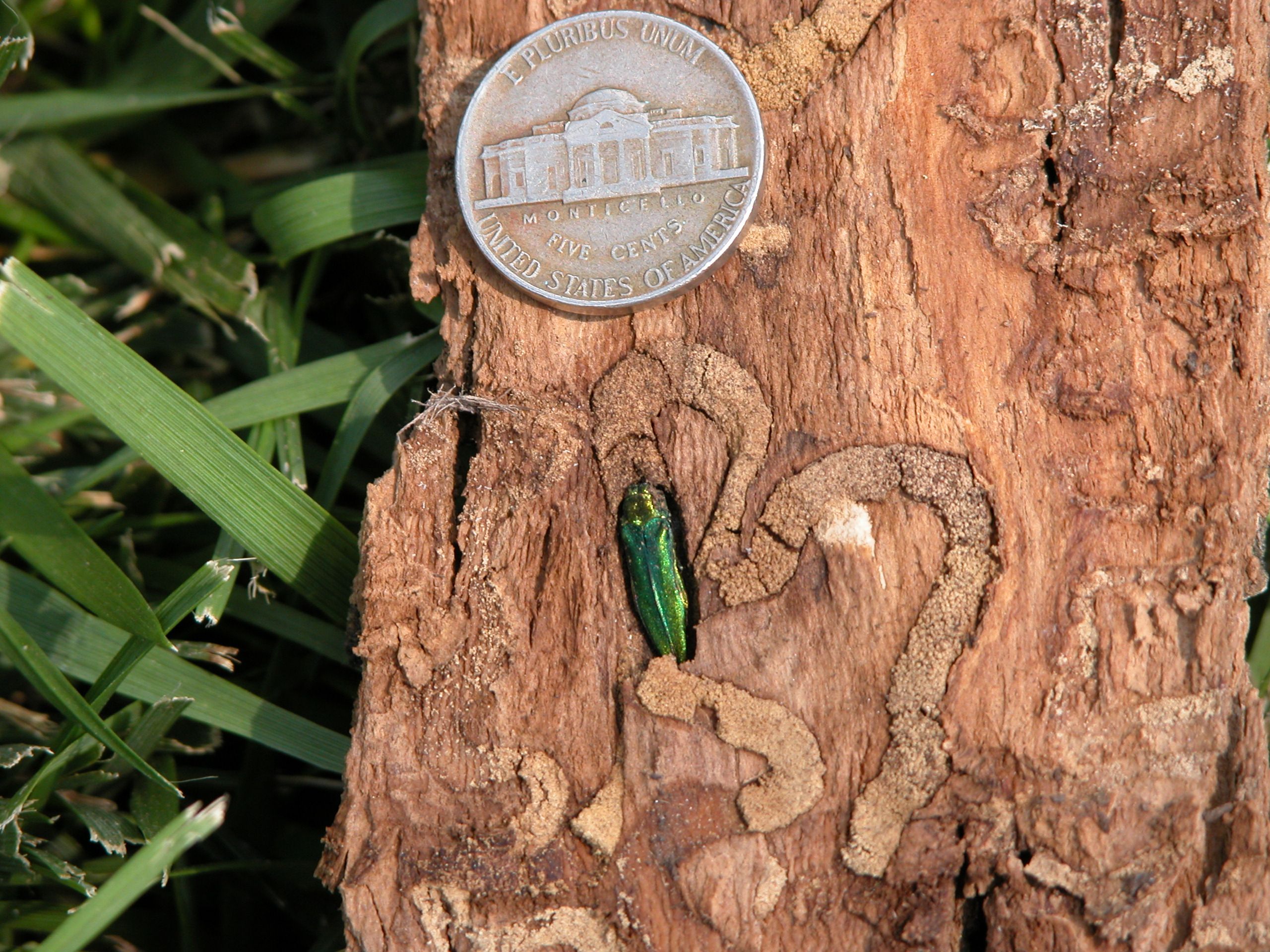Extension Master Gardeners and other citizen volunteers mobilize to help inform the public about emerald ash borer

Virginia Cooperative Extension Master Gardeners and other citizen volunteers will canvass Northern Virginia neighborhoods to help educate home and property owners about the emerald ash borer (EAB) – a destructive, green metallic beetle that has killed millions of ash trees in the eastern United States since 2002.
This program is part of a collaborative effort by the Virginia Cooperative Extension, the U.S. Forest Service, the Virginia Department of Agriculture and Consumer Services, the Virginia Department of Forestry, and the U.S. Department of Agriculture's Animal and Plant Health Inspection Service to monitor and manage the emerald ash borer. With funding support from the U.S. Forest Service, the volunteers will help to inform the public about EAB, mobilize citizens to identify EAB in their communities, and participate in efforts to manage the beetles’ impact.
According to David Close, state Master Gardener coordinator, volunteers will work with local homeowner associations and attend home and garden shows to educate homeowners about EAB, including how to identify the pest and what to do if they think their trees are infested. “The more people we have looking for EAB, the better chances we have to contain and manage the pest and limit its spread to other trees.”
Virginia Cooperative Extension is also collaborating with the Virginia Tech Department of Forestry to develop online educational materials for green industry workers. “Most of the urban forest is privately owned, so contractors are the ones who primarily care for those trees,” said Eric Wiseman, assistant professor of urban forestry. “These workers are in the trenches and on the frontlines. Having them prepared to recognize EAB is extremely important.”
Wiseman is also working on a project with the Virginia Department of Forestry to inventory ash trees in municipal rights-of-way. “One of the challenges of dealing with EAB is that we don’t know how many urban ash trees there are and where they are located,” said Wiseman. He hopes the tree inventory will help the volunteers target their efforts to the areas with the most ash trees.
Wiseman points out that the EAB’s impact on a community is much more than just aesthetics. The loss of a tree can have a significant economic impact, including the cost of tree removal and replacement as well as diminished ecosystem services such as energy conservation, air-pollution abatement, and storm-water mitigation. The U.S. Department of Agriculture estimates the cost of the pest to municipalities, property owners, nurseries, and the wood-products industry in the tens of millions of dollars.
Although the emerald ash borer was eradicated in Virginia in 2004, it was found again in Fairfax County in July 2008. The Department of Agriculture and Consumer Services quarantined Fairfax, Arlington, Fauquier, Loudon, and Prince William counties as well as the cities of Alexandria, Fairfax, Falls Church, Manassas, and Manassas Park. The quarantine restricts the movement of ash nursery stock, green (untreated) lumber, and wood products – including firewood – from quarantined localities to nonquarantined areas.
For more information about the identification and management of EAB, citizens are encouraged to contact their local Virginia Cooperative Extension Office or visit the EAB informational website.
Virginia Master Gardeners are volunteer educators who work within their communities to encourage and promote environmentally sound horticulture practices through sustainable landscape management education and training. As an educational program of Virginia Cooperative Extension, Virginia Master Gardeners bring the resources of Virginia¹s land-grant universities, Virginia Tech and Virginia State University, to the people of the commonwealth.




